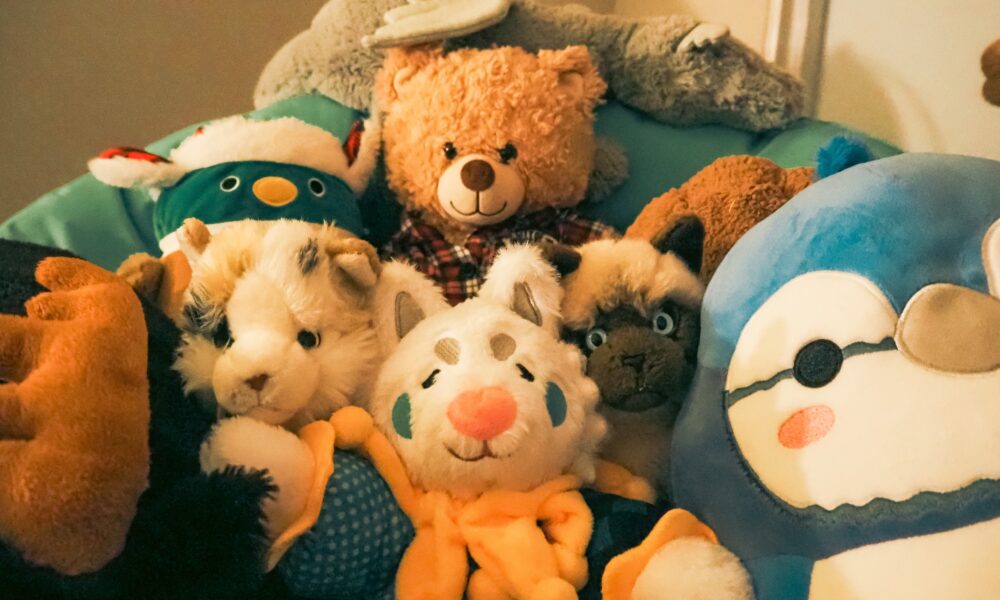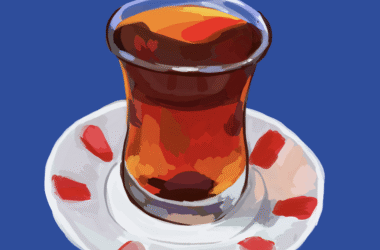Over the holiday, I visited the New York Public Library’s Polonsky Exhibition, a permanent collection of “treasures” that includes the original Winnie the Pooh stuffy—a surprisingly familiar Farnell Alpha bear model donated by Christopher Robin himself. Though nearly a century older, the plushy beared resemblance to my own childhood teddy. While we think of time as fixed in sepia tones, the reality of history is dynamic—relentlessly and perpetually “in the happening.” Stuffed animals have always occupied the heart-shaped, rose-tinted blindspot in our rearview mirror, capturing moments of sentimentality that transcend time.
Though Richard Steiff of the Steiff company made the first stuffed bear in 1902, they had not come to be known as “Teddy Bears” until a historical moment involving renowned sportsman and American president Theodore Roosevelt. Roosevelt had gone on a bear hunting trip in Onward, Mississippi, with Governor Andrew Longino. While many people in his party managed to find game, Roosevelt was down on his luck. Hoping to uplift the president’s spirits, the group’s guides captured a bear to present to him. Upon finding the defenseless bear tied down to a tree, Roosevelt refused to kill the animal, declaring it unsportsmanlike. His act of mercy was quickly immortalized in newspaper headlines and political cartoons. The bear, depicted as increasingly small and more endearing with each iteration, perfectly framed Roosevelt as a tenderhearted, everyman-father archetype. Inspired by Clifford Berryman’s Washington Post cartoon of the story, Morris Michtom, a Brooklyn candy maker, manufactured a popular series of toy bears called “Teddy’s Bear” in honour of Roosevelt’s compassion.
Stuffed animals surged in popularity around the Great Depression, when resources were scarce and the United States grappled with widespread economic hardship. Unlike the utilitarian woodblock toys typical of the time, plushies offered something more human: Unconditional love, soft solace and a friendly face—a much-needed emotional refuge from the harsh realities of a then-insecure world.
Today, stuffies occupy a similarly special, bear-shaped hole in the hearts of students navigating the pressures of academia. For science students especially, balancing rigorous coursework, intensive labs, and the emotional weight of studying a world in perpetual crisis can be overwhelming. Sukaina Haider, U0 Science, suggested that these challenges make moments of plush respite all the more necessary.
“In science, we’re going through the trenches. I think if anything, we’re more inclined to run home to something comforting,” she said in an interview with The Tribune.
Jorey Alharbi, U0 Engineering, reflected on how their beloved teddy bear brought familiarity and sentimental warmth to their bare-walled dorm room.
“I don’t have a lot, just one big teddy bear that my grandmother gave me before she passed. It’s the first thing I move; it helps establish home,” they shared.
It’s integral to recognize that stuffies aren’t just inert toys—they’re transformed by the process of play. Naiya Delprat, U2 Arts, has a massive collection of 106 stuffies, nearly all named—of which she brought 28 from New York to Montreal.
“When you play with your stuffies they become your friends, you never outgrow your friends,” she said.
For some, stuffed animals provide a sense of companionship. Grace Caldwell, U1 Arts, reflected on her relationship with her stuffies, highlighting that wanting the best for them is a form of self-care.
“I feel like we take care of each other,” she told The Tribune. “A stuffy is a false hug and real hope. Every kid should have a stuffy, whether or not you want to hold onto it is your decision, but everyone is entitled to comfort.”Born and raised in Winterpeg, Manisnowba—where the grass isn’t quite greener, it’s probably just dead or dying—I’ve always had a soft spot for Winnie the Pooh. Named after her Manitoban caretaker Harry Colbourne’s hometown of Winnipeg, “Winnie” was a real black bear who served as the inspiration for Christopher Robin’s stuffed animal, and the timeless children’s character it became. The humble origins and international success of the character along with all its plush peers represent a whispered promise: Even the smallest things in life have their way of leaving a mark on this big world.







